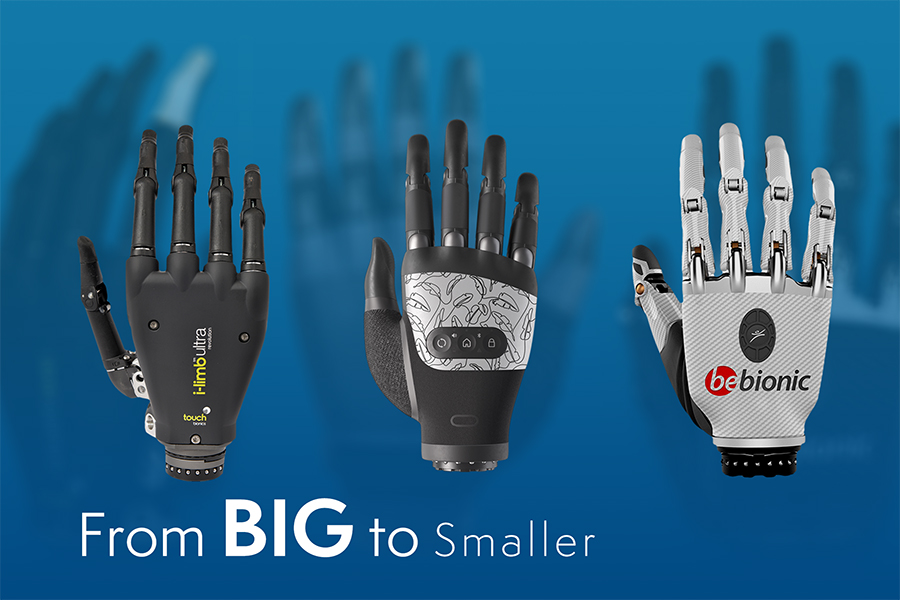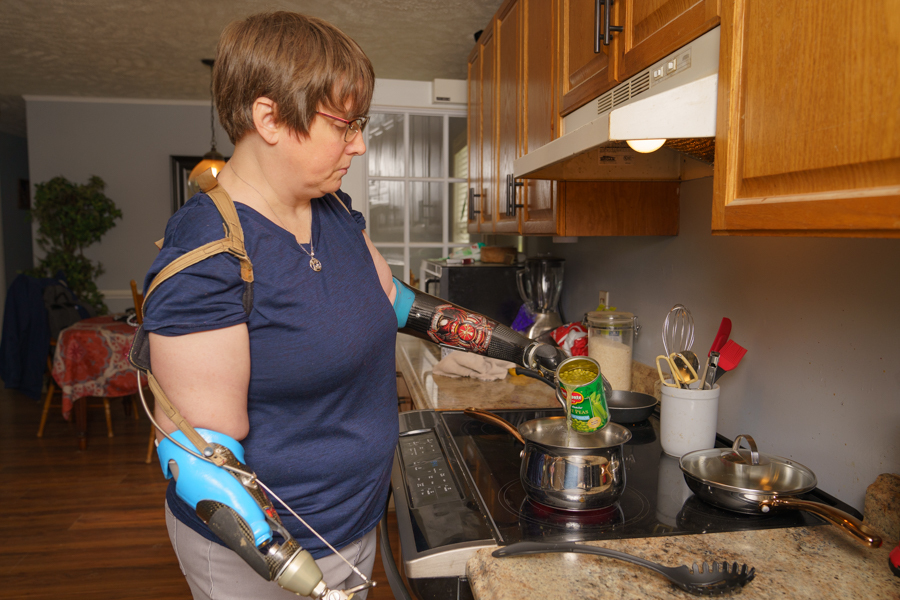Keeping your new terminal device clean doesn’t have to be complicated. But you do have to make sure to follow the correct procedure for your type of prosthesis. Please read on for information about different terminal devices and how they can be cleaned. We also have information and tips for how to get your sound hand clean when you can’t use your terminal device to help wash it. You can find more prosthesis "Do's and Don'ts" in our Upper Limb Library as well. You may also find our article regarding which devices are waterproof and water-resistant helpful.
Passive
Passive prosthetic devices are generally made out of plastic, silicone or metal (such as the Point Designs Digits). These types of devices are usually water-resistant, meaning they can be washed the same as a sound hand — just don’t soak them in water, and if the device gets saltwater on it, be sure to rinse with fresh water. It is not recommended to use antibacterial soap on silicone devices. For a more thorough sanitization of the passive prosthesis, use alcohol spray and wipe with a clean cloth, or follow the instructions as given by your prosthetist, therapist or in the manual that came with your device.
Body-powered
Similar to passive devices, these are generally tolerant of water. Body-powered hooks and smaller devices, like those from Naked Prosthetics, can be washed the same as a sound hand. Be sure to sanitize as needed per the instructions given with the device.
Electric/Myoelectric
Here is where things get tricky. Obviously one of the reasons people get electric hands is to help them throughout their day. But how are they supposed to get through their day with a hand they can’t wash?
There are some you can wash — the ETD (electric terminal device, AKA the hook) and TASKA hands are waterproof up to the electronic connection with the wrist (though there are water-resistant wrists as well).
Some single-motor myoelectric electric hands will be covered with a cosmetic glove. As long as that glove is intact, it is safe to rinse the fingers of the hand lightly as long as you dry it off thoroughly. Please keep in mind that it’s important to check the cosmetic glove for perforations or pinholes where water could leak into the inside — ideally at the end of each day. Because some of these holes can be easily missed, it’s also recommended to clean the device with a moist cloth and sanitize with alcohol spray.
Some prosthetic terminal devices lend themselves to being covered by a latex or surgical-type glove. This can allow the user to engage in a variety of food prep, personal hygiene or child-care activities before throwing the disposable latex glove away.
Keeping Your Sound Hand Clean
If you want to be sure to get your sound hand nice and clean, but you can’t use your terminal device to help wash your sound hand, there are some helpful options available. First up, an automatic soap dispenser (pictured to the left) means the sound hand can receive the soap without any need for the other limb. Secondly, a scrub brush that is mounted in the sink using suction cups. You can find small ones and big ones (this link shows a picture of a foot with the brush, but it works just fine for hands). On the go? You can take along a washcloth that you get wet and squirt soap onto before manipulating it in your sound hand under the water. Unfortunately, this requires thinking ahead to pack a washcloth in a plastic bag, and really only gives you one shot at washing your hand. Another option is wipes, like baby wipes.
Please keep in mind that the recommendation from the Centers for Disease Control for hand washing is hot, soapy water and rubbing the hands together for twenty seconds to help stop the spread of viruses Hand sanitizer should only be used when running water is not available. But if you have a prosthetic hand, we hope you’ll be able to use the advice above to keep you and your loved ones as healthy as possible!
Katie, who uses a TASKA hand, recently sent in a video showing how she washes her hands:





%20President%20and%20Senior%20Clinical%20Director.jpg?width=600&height=600&name=John%20M.%20Miguelez%2c%20CP%2c%20FAAOP(D)%20President%20and%20Senior%20Clinical%20Director.jpg)










No Comments Yet
Let us know what you think